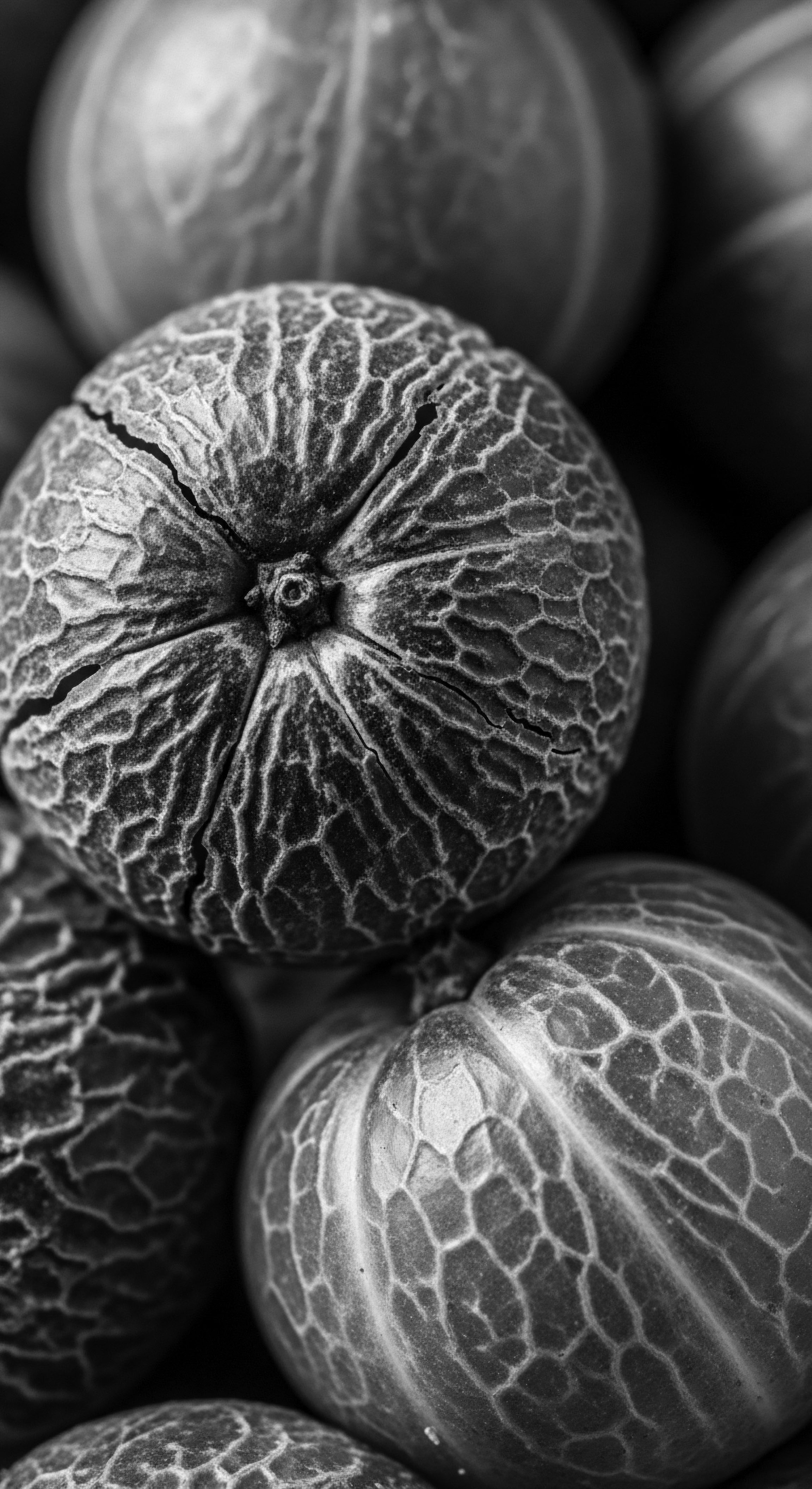
How does textured hair architecture enable ancestral styling techniques?
Textured hair's unique coil and follicle shape naturally enable ancient coiling, braiding, and knotting techniques, preserving a rich cultural heritage.

What historical practices connect textured hair oiling to cultural identity?
Textured hair oiling historically connects to cultural identity through ancient care, community rituals, and acts of heritage preservation.

How did ancestral colors protect textured hair?
Ancestral colors from natural dyes fortified textured hair against environmental harm, enhancing its inherent beauty and resilience within cultural traditions.

What ancestral practices influence today’s textured hair care?
Ancestral practices deeply influence textured hair care today, providing a heritage blueprint for nourishment, styling, and protection.

Does Rahua oil’s heritage influence its modern use?
Rahua oil's heritage profoundly influences its modern use, providing deep nourishment for textured hair through ancient Amazonian wisdom.

What molecular interactions explain oil benefits in traditional textured hair care?
Oils enhance textured hair by penetrating strands or coating surfaces, reducing protein loss and fortifying ancestral care rituals.

What ancestral wisdom shapes textured hair care practices?
Ancestral wisdom shapes textured hair care through intuitive biology, symbolic styling, and holistic well-being, deeply honoring heritage.

What ancestral knowledge informs shea butter’s use for textured hair?
Ancestral knowledge informs shea butter's use for textured hair by providing foundational understanding of hair needs, protective styling, and holistic wellness practices passed through generations.

What is the ancestral method for hydrating textured hair?
Ancestral textured hair hydration centered on water, plant-based emollients, and protective styling, echoing heritage wisdom.

How did cleansing traditions shape textured hair identity?
Cleansing traditions shaped textured hair identity by rooting care in ancestral wisdom, communal rituals, and a deep reverence for natural beauty.

What traditions connected textured hair to ancestral practices?
Textured hair traditions connected ancestral practices by serving as vital cultural markers, spiritual conduits, and ingenious forms of communication and resistance.

What minerals in red clay traditionally offer sun shielding for textured hair?
Red clay, rich in iron oxides, traditionally shielded textured hair from the sun by forming a physical barrier and absorbing harmful rays, a practice deeply rooted in ancestral care.

What enduring ancestral traditions continue to shape textured hair care today?
Ancestral traditions deeply shape textured hair care today through practices, communal rituals, and the continued use of natural ingredients, all connecting to a rich heritage.

How do traditional textured hair practices align with modern hair science?
Traditional textured hair practices often align profoundly with modern hair science, validating ancestral wisdom through scientific understanding of hair's unique heritage.

What historical evidence supports braids as protective styles for textured hair?
Historical evidence across millennia reveals braids as enduring protective styles, safeguarding textured hair through ancestral care.

How do ancestral hair practices connect to textured hair health?
Ancestral hair practices connect to textured hair health by offering time-tested methods of protection, nourishment, and styling that honor its unique heritage.

Can black seed oil support modern textured hair growth and scalp health?
Black seed oil supports textured hair and scalp through properties historically revered and now scientifically affirmed, connecting modern care to ancestral wisdom.

